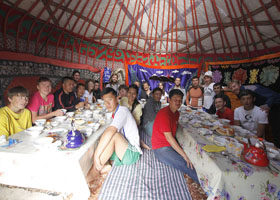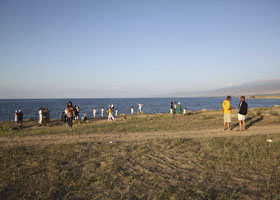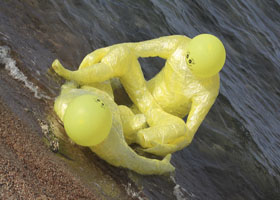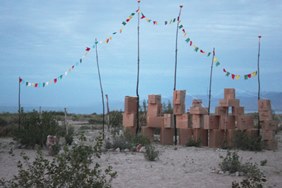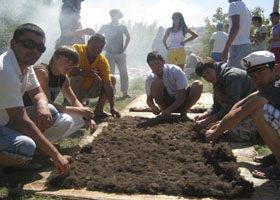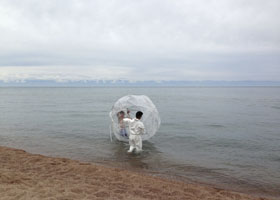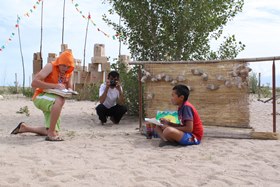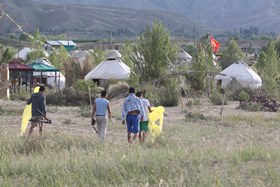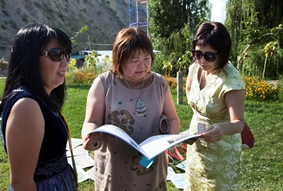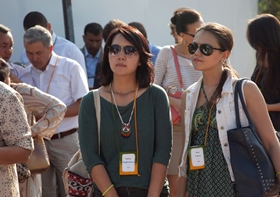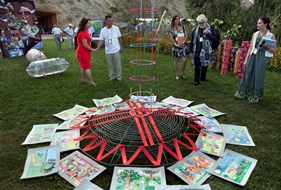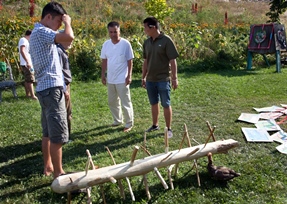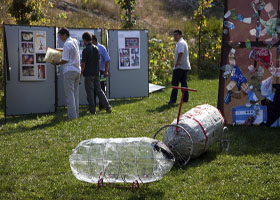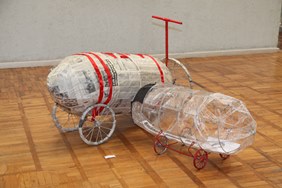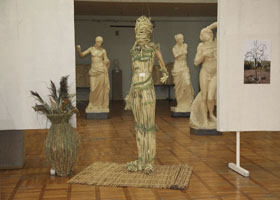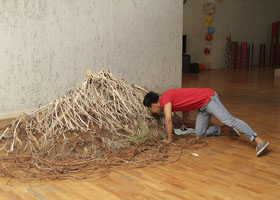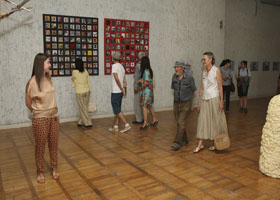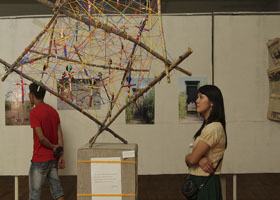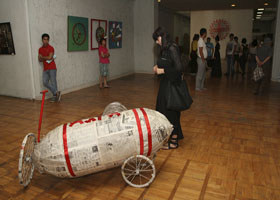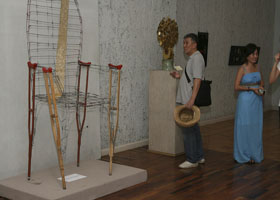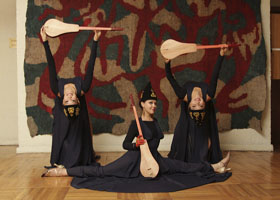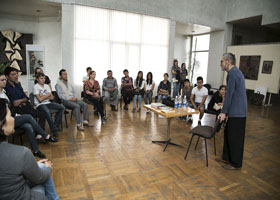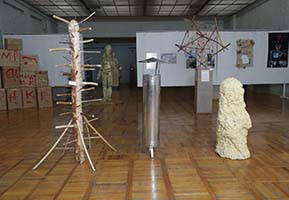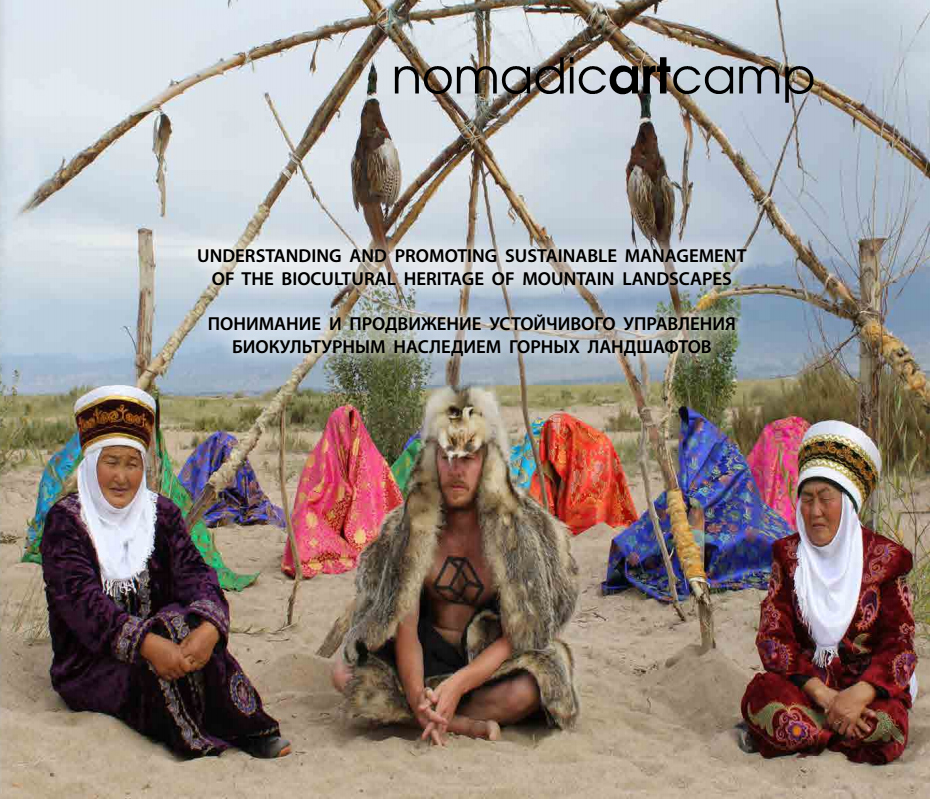2013 NOMADIC ART CAMP
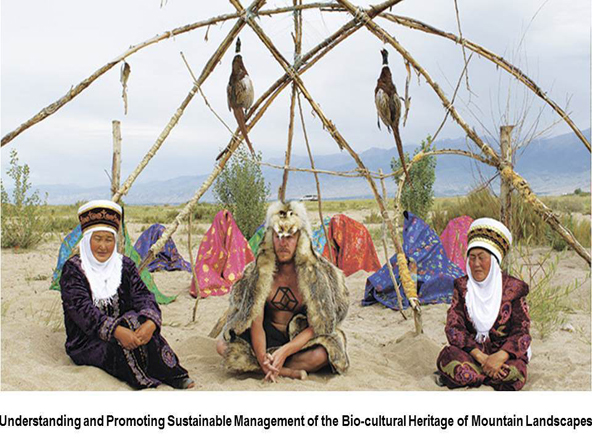
Nomadic Art Camp 2013: Understanding and Promoting Sustainable Management of the Biocultural Heritage of Mountain Landscapes
The 2013 project brought together a diverse group of young artists from Kyrgyzstan, Tajikistan, Kazakhstan, Germany, and Switzerland for an immersive, cross-cultural experience aimed at exploring the intersection of ecological preservation, cultural heritage, and contemporary art. The initiative focused on the rich biocultural heritage of the mountain landscapes surrounding Lake Issyk-Kul, located in the north of Kyrgyzstan, and aimed to raise awareness about the importance of sustainable management in preserving both natural and cultural legacies in these unique regions.
The artists resided in traditional yurts, the iconic portable dwellings of nomadic culture in Central Asia. Set up in the serene landscape of northern Kyrgyzstan near the picturesque Lake Issyk-Kul, the yurts provided the perfect setting for the artists to live and work in harmony with the environment. This location, rich in both natural beauty and historical significance, allowed participants to connect deeply with the local landscape, its ecosystems, and the cultural practices that have shaped the region’s inhabitants for centuries. While living in the yurts, the artists were encouraged to reflect on the concept of ecological memory—the idea that landscapes and cultures carry a form of memory through their relationship to the land, the traditions passed down through generations, and the ways communities interact with their environment. The aim was to inspire the artists to consider how biocultural heritage—the intertwined relationship between biological diversity and cultural practices—could be represented and preserved through creative expression.
The participants were tasked with using their art to communicate the complexities of biocultural heritage, which includes the preservation of ecosystems, traditional knowledge, and sustainable practices passed down through generations. Their work sought to raise awareness about the importance of protecting mountain landscapes, ensuring that both the natural environment and the cultural practices that sustain local communities are preserved for future generations. Throughout the project, the artists engaged with various aspects of biocultural heritage, including local customs, traditions, and ecological knowledge, which they integrated into their art. This allowed for a cross-pollination of ideas and perspectives, as each artist brought their unique cultural background and artistic lens to the project. By sharing their individual interpretations of ecological memory and heritage, they created a collective dialogue that highlighted the urgent need for sustainable management practices.
The culmination of the project was an exhibition held at the Kyrgyz National Museum of Fine Arts in Bishkek. The exhibition presented a variety of artistic works, including painting, sculpture, photography, video, and installation art, exploring how biocultural heritage can be understood and communicated. Each artwork reflected the artists’ individual responses to the themes of ecological preservation and cultural continuity within the context of mountain landscapes. The exhibition served not only as a platform for the artists to showcase their work but also as a powerful tool for public engagement. Visitors were invited to reflect on the interdependence of nature and culture, and how artistic expressions can shape our understanding of the challenges faced by mountain communities. The displayed artworks also aimed to inspire action toward sustainable management practices that respect both the environment and the rich cultural traditions that have evolved over centuries in these mountain regions. By integrating art into the conversation about sustainability, the project demonstrated the potential for creative expression to act as a catalyst for social and environmental change, while emphasizing the importance of preserving the cultural practices that are inextricably linked to these environments.
Artistic Direction and Curatorial Leadership: Shaarbek Amankul
